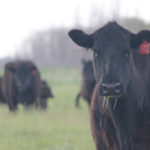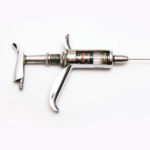Reading Time: 2 minutes There are things that beef producers need to look out for in the coming months when it comes to herd health and biosecurity. “We do know that there are changes in play that will require all medically important antimicrobials to become prescription only,” said Rob McNabb, general manager of the Canadian Cattlemen’s Association. Some medically […] Read more

Put antimicrobials, traceability, and biosecurity on your to-do list
All three areas are undergoing changes that producers should be aware of, says the Canadian Cattlemen’s Association

Klassen: Calm feeder market prior to fall run
Western Canadian feeder cattle markets were hard to define over the past week given the limited numbers on offer. Most sale barns remain in holiday mode and the few cattle coming on the market were of various quality. Lighter weight feeders were trading $3 to as much as $10 lower compared to week ago levels; […] Read more

Klassen: Feeder market firm despite outside influences
Western Canadian feeder cattle markets were unchanged from week-ago levels despite the strengthening Canadian dollar, stronger feed grain values and weaker fed cattle prices. Feedlot operators are wondering if this is a mockery, a delusion or a snare. Shorter term replacements are hard to come by and haven’t softened a half hair length. Small groups […] Read more

Saskatchewan offers provincial pasture leases to patron groups
Cattle producers using provincial pastures heading into the final three years of the Saskatchewan Pastures Program (SPP) will get the first chance at leasing them. The province announced in March it would wind down the SPP, kicking off a public consultation process. Based on those consultations, the province confirmed Thursday it will grant the 50 […] Read more

Six ways to keep your cattle wormer working
Resistance among internal parasites to broad-spectrum cattle wormers is emerging in Canada and experience in other countries leaves no reason to believe the problem won’t worsen. On the brighter side, producers here still have a fighting chance to retain the efficacy of available cattle wormers by combining parasite control strategies, says epidemiologist Dr. Fabienne Uehlinger[...]
Read more
Read more

They’ll drink to that — cows and calves do better with cleaner water
Study finds cattle drink more from troughs, and that results in more milk and faster-gaining calves
Reading Time: < 1 minute Pumping dugout water into troughs can boost weight gain in calves. In a study done at the Western Beef Development Centre, cow-calf pairs were provided with either direct access to a dugout or access to troughs of untreated water pumped from the same dugout. Calves with cows that drank from the troughs gained an additional[...]
Read more
Read more

Green grass and newborn calves a perfect match, says longtime grazer
The list of pluses is long, says Jim Bauer, including easier calving, reduced feed requirements, and calves that outgain their winter-born cousins
Reading Time: 3 minutes Assisting a cow with her calf is much nicer when the weather is pleasant — and matching calving season with the onset of green grass makes you more money, too. “When you can line up that reproductive cycle with the grass production cycle, that’s huge,” said Jim Bauer, an Acme-area rancher and former manager of[...]
Read more
Read more

What’s good for calves is good for your pocketbook
The benefits of low-stress weaning are clear — higher weight gains and a big drop in treatments
Reading Time: < 1 minute Calves that are fenceline weaned vocalize 50 per cent less, walk less, and have higher weight gains in the first 10 weeks post-weaning compared to conventionally weaned calves. Fenceline weaning is nearly as effective as two-stage weaning at reducing signs of stress. With this method, cows and calves are separated by a fence but can[...]
Read more
Read more

Spend a little now and make money later
Reduced death loss, fewer open cows, and reduced shedding are major benefits from a proper vaccination program
Reading Time: 4 minutes The adage goes, ‘It takes money to make money.’ It is no different in the beef industry. “Low-cost producers do not cut corners on pasture, bulls, and herd health,” said beef economist Kathy Larson of the Western Beef Development Centre. “Spending less on these items often leads to reduced herd productivity and thereby raises your[...]
Read more
Read more

Top tips for vaccinating
Storage, the injection route, and when you administer a vaccine are all key, says Dr. Nathan Erickson
Reading Time: 2 minutes Time it right A vaccine needs to match the immune response of the cattle to the vaccine and the period of greatest risk. “So for BVD, the risk period is the first three months of gestation, while IBR, lepto, and vibrio, they tend to be a little bit later in gestation — around four months,”[...]
Read more
Read more

